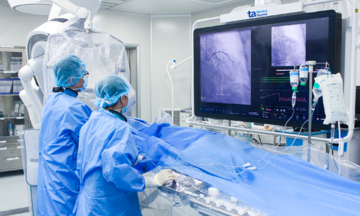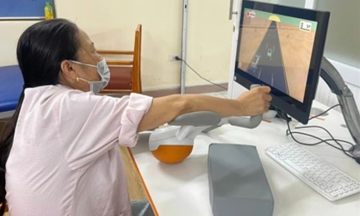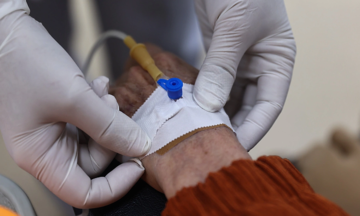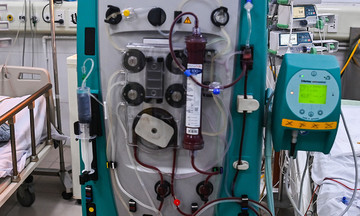Definition
Glucose in the blood fuels our cells and comes from the food and drinks we consume. After eating, the hormone insulin briefly increases, enabling the body to absorb glucose from the bloodstream for energy production.
The glycemic index (GI) measures blood glucose concentration, typically in mmol/l or mg/dl. Blood sugar levels naturally fluctuate throughout the day.
Why is blood sugar important?
Without enough insulin to process glucose from food and drinks, sugar remains in the blood. This occurs in individuals with insulin resistance, where the body doesn't respond to insulin effectively. Chronically high blood sugar damages blood vessels, increasing the risk of coronary heart disease, kidney disease, and diabetic eye conditions. At-risk individuals should monitor their blood sugar regularly to manage and mitigate these risks.
What are normal blood sugar levels?
Normal fasting blood sugar in healthy individuals ranges from 4.0 to 5.4 mmol/l, rising to approximately 7.8 mmol/l two hours after eating. For those with type 1 or type 2 diabetes, pre-meal levels should ideally be between 4 and 7 mmol/l. Post-meal, the target is below 9 mmol/l for type 1 and below 8.5 mmol/l for type 2 diabetes.
Blood sugar below 3.9 mmol/l is considered hypoglycemia. Levels below 2.22 mmol/l are life-threatening, requiring immediate medical attention.
Measuring blood sugar at home
Preparation:
Gather antiseptic (alcohol or hand sanitizer), a lancing device, test strips (compatible with your glucose meter), a phone or notebook to record results, and a personal blood glucose meter.
Steps:
First, sanitize your hands and dry the puncture site. Turn on the glucose meter and wait for it to be ready. Prick the side of a fingertip next to the nail with the lancing device and squeeze until a blood drop forms. Apply the drop to the test strip. Use an alcohol swab to stop the bleeding and wait for the meter to display the result.
If drawing blood is difficult, warm your hands by rubbing them together or soaking them in warm water, then dry and sanitize. If the lancet prick is too painful, try these solutions: change lancets regularly, adjust lancet thickness, or switch fingers.
Warning signs of low blood sugar:
Intense hunger, anxiety, restless sleep, trembling, mood swings, sweating, difficulty concentrating, vision problems, slurred speech, confusion, and dizziness. See more information on 10 warning signs of low blood sugar.
Recognizing high blood sugar:
Excessive thirst, frequent urination, increased hunger, blurred vision, fatigue, and yeast infections. Serious symptoms can arise from prolonged high blood sugar or extremely high levels: stomach pain, unintentional weight loss, nausea, and fruity-smelling breath. See more information on recognizing high blood sugar.
When to see a doctor:
Consult a doctor promptly if you experience diabetes symptoms like frequent urination, excessive thirst, hunger, fatigue, unexplained weight loss, or blurred vision. Higher-than-normal blood sugar without a diabetes diagnosis may not present symptoms. Blood tests are crucial for early detection and prevention. If your blood sugar is too high, your doctor will advise on appropriate measures.
Causes of high blood sugar:
Besides consuming sugary foods and starches, lack of sleep, stress, and dehydration can elevate blood sugar. High-GI foods are a common culprit. However, high blood sugar sometimes stems from underlying causes unrelated to diet, such as illness, stress, dehydration, medications, hormonal changes, skipping breakfast, and sleep deprivation. See more information on six non-dietary causes of high blood sugar.
Maintaining stable blood sugar:
Several strategies can help maintain stable blood sugar levels:
Consume vibrant red and blue foods: The antioxidant anthocyanins in foods like strawberries and blueberries promote better blood sugar control.
Monitor blood sugar regularly: Individuals with high or low blood sugar should monitor their levels frequently to prevent risks and complications.
Take medications as prescribed: Adhere to prescribed medications and treatment plans, avoiding dosage adjustments or new medications without consulting your doctor. This helps prevent unwanted side effects.
Follow a balanced diet: The recommended daily nutrient intake is 50-60% carbohydrates, 15-20% protein, and 20-30% fat. Never skip breakfast and combine protein, fats, fruits, or nuts to maintain stable blood sugar.
Exercise: Exercise regularly for at least 30 minutes daily, five days a week. Check blood sugar, blood pressure, and heart condition before exercising. Moderate-intensity activities like walking, swimming, cycling, and yoga can be beneficial.
Bao Bao












